













The magazine of the art-form of the photo-essay
“A free, really high quality photo-essay magazine. Fabulous!”
Stephen Fry. British actor, writer and film & documentary maker

Feb 2014 back issue


by Eric Kruszewski


In the American West, cowboys embrace life’s literal and figurative rough rides when entering rodeos to face huge
competition with hopes of big payouts. Rodeos attract even the youngest talent for participation, while seasoned
veterans strive for success on prized bulls or wild horses. Some cowboys might say it is part training, part skill and
part luck whether one conquers the animal or hangs one’s head in defeat.
Rodeo is a Spanish word that has the most common English translation of “round-up,” thus lending itself to the ideas
of cowboys surrounding cattle or a circular pen for securing livestock. Rodeo is a highly competitive sport that grew
out of the centuries-old traditional work practices on ranches throughout the United States, Spain and Mexico. The
sport was based on the skills required for cowboys to routinely perform their tasks, including gathering cattle and
moving the animals to different pastures.
The sport of rodeo and the culture surrounding it are often perceived as a blend of performance, contest and
pageantry. Cowboys are considered professional athletes who compete nearly year-round on a country-wide circuit
trying to win prize money available from event sponsors and ticket sales. Meanwhile, rodeo venues welcome rituals
that serve to revitalize the spirit of the Old West; however, modern day spectacle sometimes takes precedence.
At its core, rodeo is a world of comparisons: antiquated versus modern, sport versus splendor and man versus
animal.
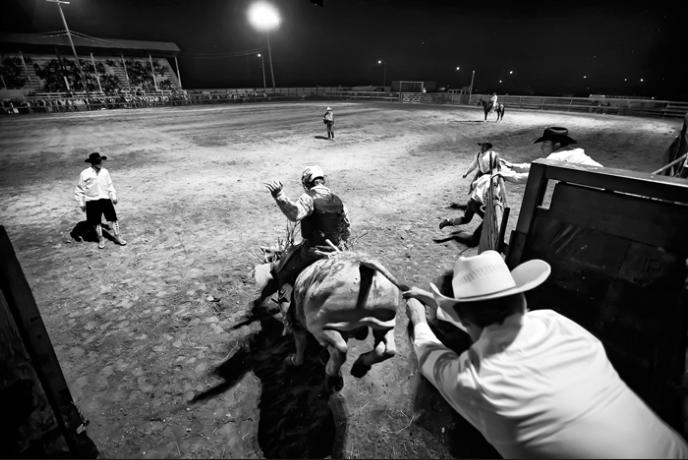
Prized rodeo bulls are generally agile, moderately framed and weigh approximately 2,000 pounds (907 kilograms).
Two cowboys embrace the popular phrase, “hang on for dear life,” as they attempt to handle a prized bull during the
rodeo’s riding competition.
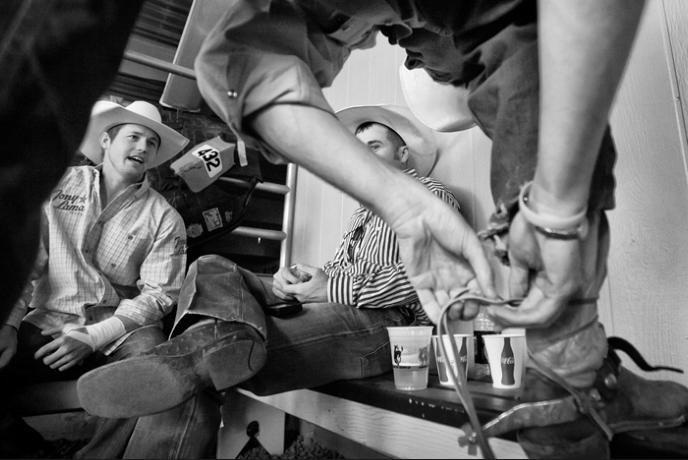
Rodeo venues have cowboy dressing rooms where participants network and prepare for pending events. Competitors
carry ample gear for each event since they are on the road for much of the year going from one competition to the next.
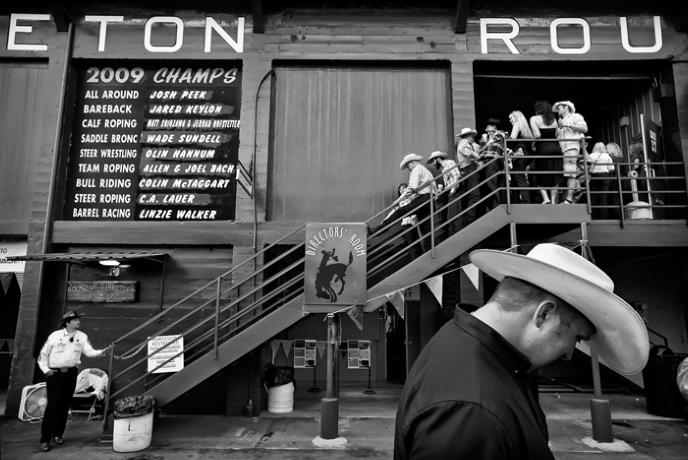
Most rodeo venues have Director’s Rooms, VIP Rooms and sponsorship tents. These are areas for participants and
influential people to congregate.
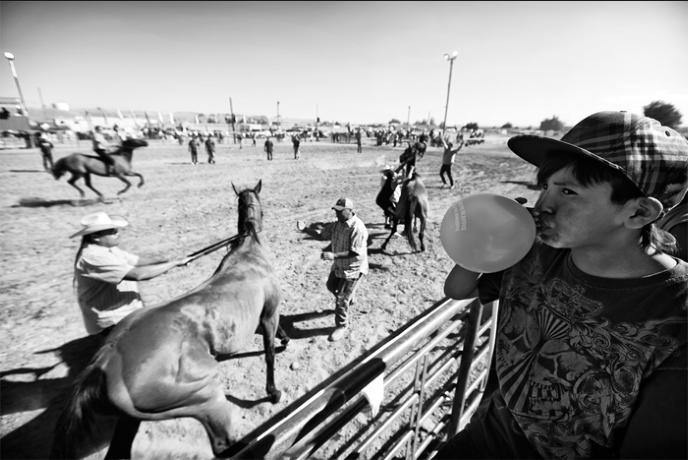
Indian Relay Races are staples at tribal rodeos and allow participants to acknowledge and revere their cultural history
of horsemanship and bravery. A young Native American boy concentrates on his balloon as others participate in the
Relay Races at the reservation’s annual powwow and rodeo.
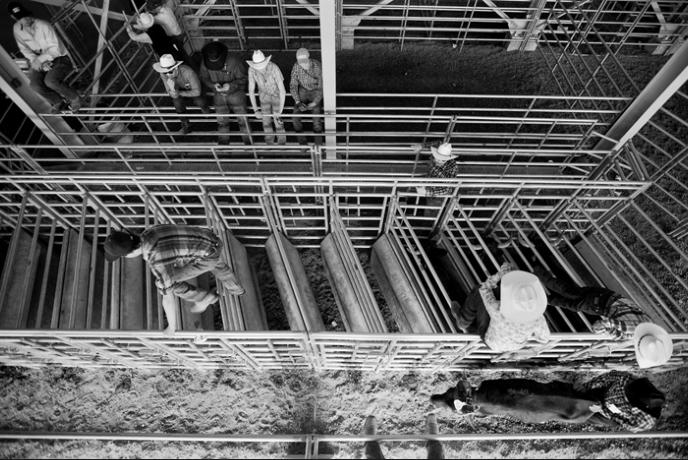
Cowboys congregate away from the main rodeo action. This metallic maze of fences and stalls, located beneath the
rodeo arena’s grandstand, is utilized for staging animals that partake in roping events (breakaway, calf, team) and
steer wrestling.
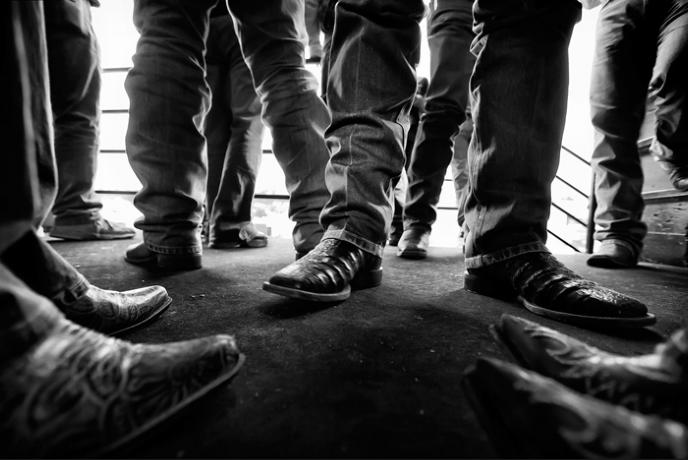
Rodeo brings together a tight-knit community of cowboys from around the world to participate in America’s biggest
events. Competitors even come from ranches throughout New Zealand and Australia with an aim to capture a portion
of prize money.
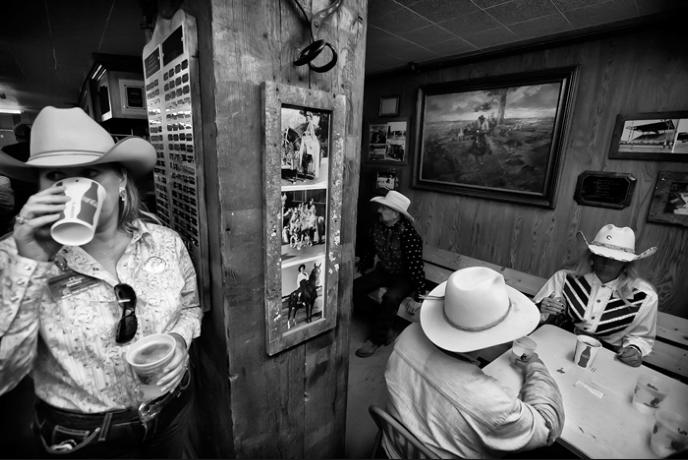
Rodeo dates back to the early 1800s when cowboys would informally test their work skills against one another.
Present day, rodeos are formal events that bring together tradition, camaraderie and company sponsorship.
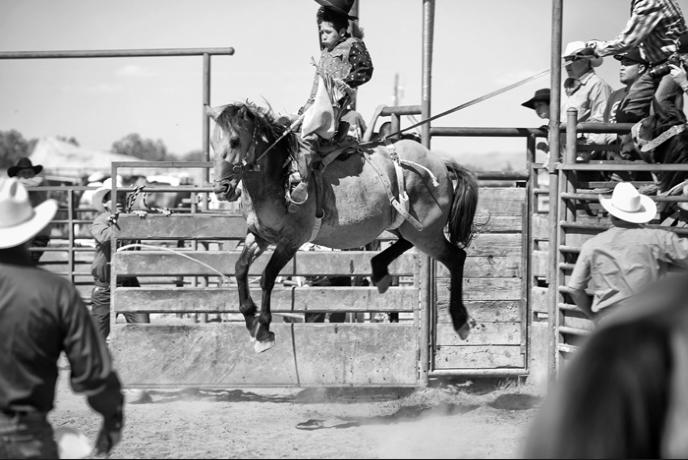
A young cowboy goes airborne during saddle bronc riding, an event whereby two judges each give one score for the
cowboy (1-25) and one score for the horse (1-25). A good score is typically in the high 80s. Horses used for this event
are usually geldings (castrated male horses) and are bred specifically for rodeo use.
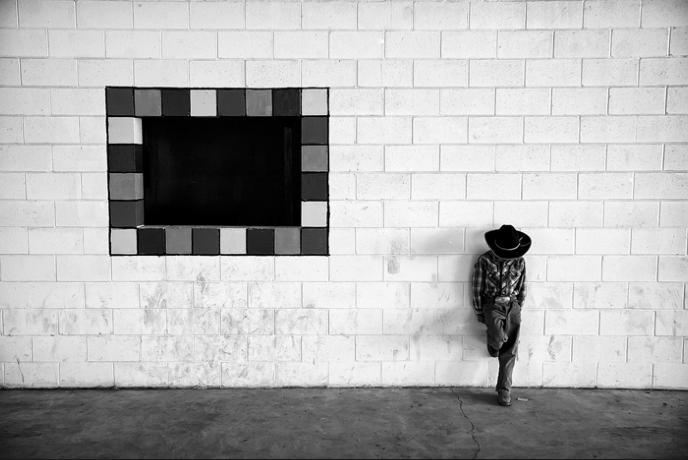
With huge competition and big money payouts surrounding rodeos, even young cowboys feel the pressure to excel.
This young Native American cowboy did not perform well in the competitions during the annual events.
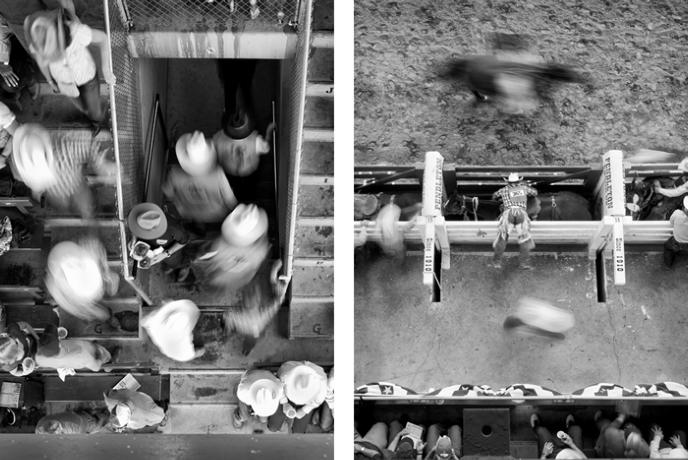
Left: Rodeo competitions span several days at each venue and daily events last for six to seven hours. Therefore,
spectators pack into seats but have easy access to refreshments and alcohol throughout the day. Right: In America,
rodeo is the official state sport of Wyoming, South Dakota and Texas. Bucking chutes are used to stage the livestock
and prepare the riders in the following events: saddle bronc riding, bareback bronc riding and bull riding.
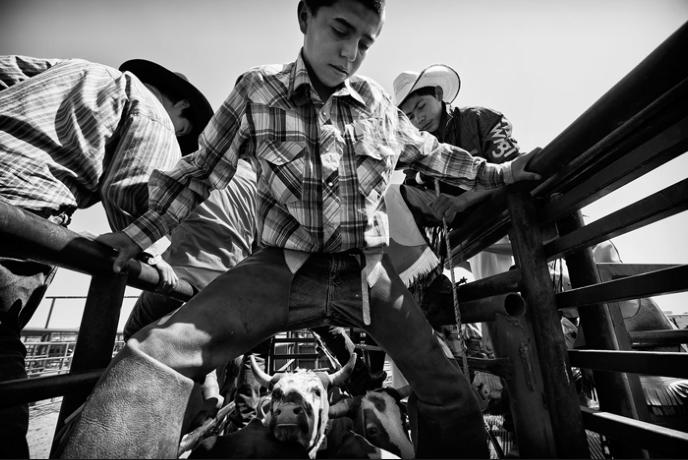
A young Native American cowboy prepares to ride a steer at Crow Agency’s annual powwow and rodeo. Young rodeo
participants use steers at an early age in preparation for riding prized bulls in the future.
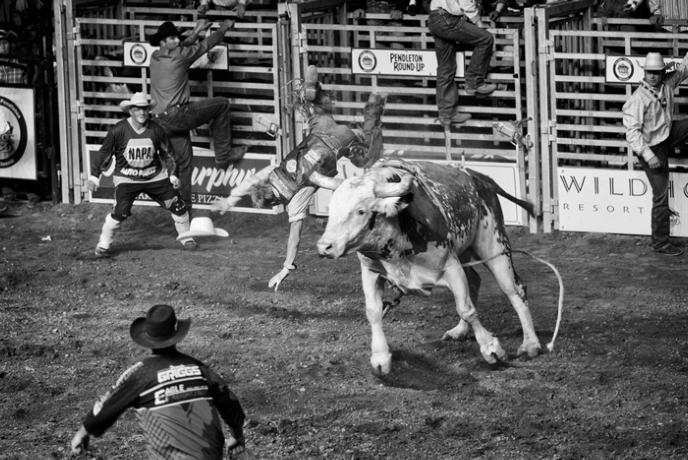
Bull riding, sometimes called “the most dangerous eight seconds in sports,” is a rodeo event whereby a cowboy
attempts to ride a bull without being bucked off. A ride only qualifies if the cowboy remains mounted for 8 seconds.
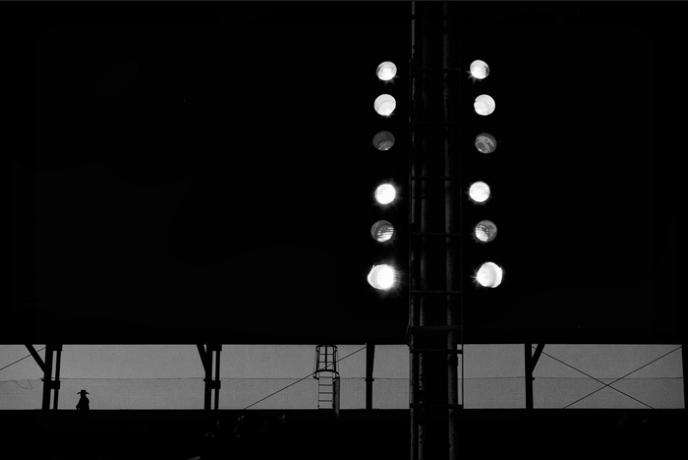
Rodeos are usually held over several days, allowing multiple rounds of event competition to crown the respective
winners. Each day, a professional rodeo may see attendance of approximately 100,000 people.
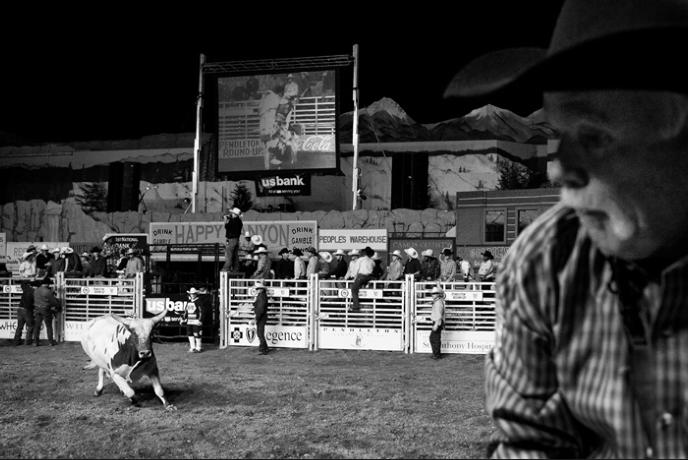
Bulls attack because of trained response, agitation and movement of others around them. During the bull-riding event,
rodeo clowns, as well as professional photographers like this man, may attract the bull’s attention.
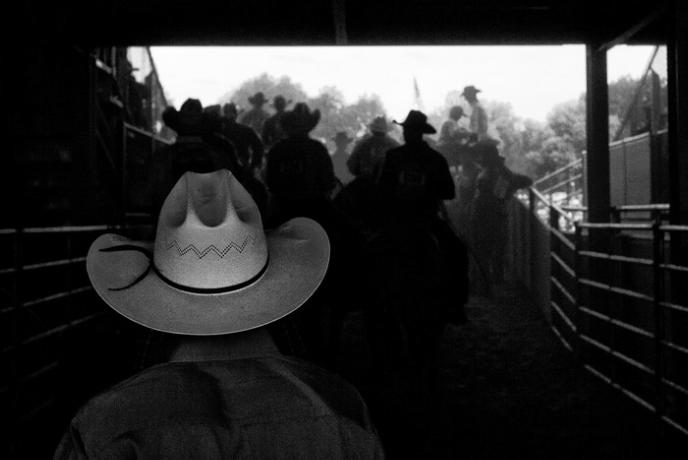
The Professional Rodeo Cowboys Association organizes over 100 rodeos throughout the year that take place all
across America. Each event brings together cowboys from many areas to participate in the competition.











